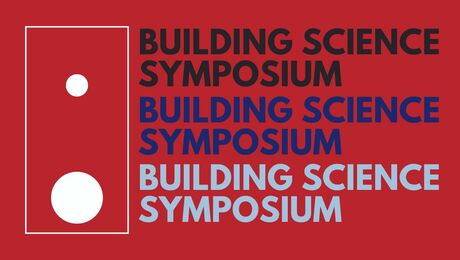I’m in the market for a pipe bender, but don’t know what to look for. Want to bend 1.5″ or so tube steel for a stair rail. Also wanna bend some flat stock. In the past I had the shop send it out, but would prefer to mess around myself.
What tool would do the trick…and what cautions to have when scoping it out on ebay?



















Replies
Relatively inexpensive pipe benders at Harbor Freight and Northern Tool. Basically hydraulic presses with pipe bending jigs. I've used these to bend heavier gauge pipe. Not sure if they work as well on lighter gauge tubing which can deform easily. Fabricating shop here uses a very expensive rolling bender. Racecar builders do this kinda stuff alot?
Both of those places also have a tool for bending (both sharp and radius) flat stock.
Ahhhh, half the trick is learning the vocabulary. "Roller bender" brought up what I had seen: http://www.wikco.com/rbndr.html . As you noted, the price is (too) steep.I'm wondering if a combo of a ring roller for some stuff and a bender for others can get me through all I need...hmmmThe hydraulic bender will fit my tube (1.5")...does that allow really tiny bends--as opposed to only a preset distance--so that I can do a lot of them along the length of pipe to get the radius I want? The description includes the sentence "bending bars can be adjusted to distances of 11 1/2 inch, 15 1/4 inch, 21 1/4 inch, 23 1/4 inch and 27 inch" and I don't know what that distance measures. Is this clear? With the ring roller I can create any diameter I want; is the same possible with a bender?Thanks.
These roller benders are very spendy and not very versatile. Unless you're making just rings and coils, look for something else. You'll find that they're very limited as to how small a radius they can generate, regardless how thin the stock is. We have an Eagle Bending Machines roller unit very much like the one in the link you posted (made by Curvatrici in Italy and name-branded by Eagle) which is a very solidly-built machine and good for what we use it for- rolling kick plates for round openings in grating, rolling rings out of angle and making large dia. tubing coils to use inside tanks.
If all you're doing is bending pipe for handrail, you have two less expensive options. One is a manual shoe bender you can buy at any electricians suppy house, which is good if you've got a strong back and a firm place to stand... the rest of us use hydraulic shoe benders mentioned before- they're cheap these days from places like Harbour Freight. There's a rotary electric version if you've got more to do or you've got out-of-plane bends to do. Both use shoes of fixed radius, one per pipe size, so you don't have too many options. You need special mandrel benders to get tighter radii than that.
>Both use shoes of fixed radius, one per pipe size, so you don't have too many options. You need special mandrel benders to get tighter radii than that.Do the hydraulic benders allow a _bigger_ radius than the fixed size? Can you bend it _less_ or does it only go to that one size? My immediate use is a gentle curve, not a tight one.
You can set the radius with the bending bars or you can "eyeball" the bend. I suspect you could come up with a way to get a consistent bend to the radius you need. Incidentally I'm remembering a FHB article from maybe years ago where a guy made his own bending jig to make stair rails. Cant remember which year but Ill look for it.
Tom
Cool, thanks. I'm fine eyeballing. Just didn't wanna buy that and be locked in.
On RMC, heavywall conduit, you have to be careful not to kink the tube. Minimum bend radius is always a concern. Most of those simple and cheap Harbor Freight, hydraulic jack and shoe type benders, are not rated for conduit because of these two issues. That doesn't mean that for an occasional bend or two I haven't used one.Care and discretion is needed bending conduit but you can go wild if you doing art or light structures. A trick is to get a hundred pounds or so of course builders sand and keep it clean and dry. This, by use of a wide mouth funnel and some duct tape, is used to fill the pipe. Use a broom handle to pack it if needed. Experiment a bit. Get the sand fill right and you can bend the pipe pretty tight without kinking or collapsing it. Take off the tape and dump the sand after the bends are done.Combine it with a certain amount of heating and it is remarkable what can be done. Throw in some forge work and welding you can make just about anything.I have seen fancy weight benches, stair rails, children's playsets and modern art all done this way. A few have made it a cottage industry.
I can vouch for the sand. Works wonders when bending light-walled tubing. But if you're bending sch40 pipe or conduit, the shoe benders work fine without heat or sand. The shoe benders we have are exactly the same radii as the electric bender we have for conduit work, and we've never seen a tendency to kink pipe. Tubing and EMT conduit are a different beast entirely- we have both roller and shoe-guided tube benders here and use them both.
Bending with shoes designed for a larger size pipe will give you a more oval profile when you're done, but that may look better than doing a number of "kicks" to give a larger radius. Your results may vary- experimentation is key.
Most industrial handrail I've seen is made from pipe, not lightwall dimensional tubing- unless it's stainless and you really want to conserve material. And crappy pipe at that- we buy furnace-welded pipe or off-spec pressure pipe for use as handrail. For stainless, sch10S pipe is sometimes cheaper than dimensional tubing unless you get the "ornamental grade" tubing- in this case, the ornamental grade isn't a comment on how pretty it is, but rather that it is unsuitable for use as pressure tubing.
Dimensional tolerances are sloppier on pipe, particularly on carbon steel pipe, but WTF- it's handrail! A little welding and blending with a hand grinder with a flap wheel sanding disk and it looks great.
"but you can go wild if you doing art or light structures"
Oh Yeah....!
Sounds like you want a JD2 bender. They are hand operated, and have a power option. I'll get you a website, or do a search on "JD2 tubing bender". Steer clear from the Harbor Freight units, not what you are looking for. The JD2 has a variety of dies to bend different radius, as well a tube diameter.
You'll also want a tubing notcher for fit-ups, I've got a "ol' joint jigger" that uses hole saws and has worked flawless for years, simple ,easy affordable.
A ring roller will not work in this case, unless you want very large diameters, and have alot of room to set it up, and many hands to control the tube. They have them also.
WARNING: you are traveling a fascinating road, very addicting, and costly...once you start bending and welding steel, the world suddenly opens up, and the skies clear and you can see forever...it costs $$$$$$.
Another warning.....when talking to steel guys, remember PIPE is for poop, tubing is for fabrication....tubing has dimensions you can measure, pipe varies all over the place. Keith
Hmmm...if it's made of tubing, why do they call it pipe railing? Seriously, thanks for the head's up on the lingo. I'm planning on a tube railing...err, pipe railing...on a curved concrete stairs. That would certainly call for a notcher. Also thinking about building a door for my curved fireplace opening, which would use the roller. Other stuff could follow. After calling contractors for those jobs, and getting sticker shock or never getting a response, the thought, "I built the rest of the house...guess I can finish it, too....just need a few more TOOLS..." floated through my head.
"WARNING: you are traveling a fascinating road, very addicting, and costly...once you start bending and welding steel, the world suddenly opens up, and the skies clear and you can see forever...it costs $$$$$"
Oh Man...!
My fave bender is the Hossfeld Model No. 2 Bender, but as previously mentioned, pipe & tube fabrication equipment get spendy quickly.
Someone mentioned the basic difference between pipe (“for poop†– love it) and tubing, and how the measurements for pipe seem rather arbitrary. Try and find an 1 ½†with your tape measure on an 1 ½ pipe.
As I understand it, years ago, when steel was crappy, the I.D. of the pipe was, for example 1 ½â€. As the steel chemistry improved, they were able to decrease the wall thickness, but wanted to be able to use the same old fittings – I believe the buzzword is “backwards compatible.â€
Simply, tubing is measured O.D., pipe is “measured†I.D.
Spud
Never underestimate your ability to overestimate your ability